As the world grapples with the realities of climate change, investors are increasingly looking beyond traditional avenues to explore eco-friendly investments that promise not only financial returns but also a positive environmental impact. The investment landscape is evolving, with renewable energy at the forefront, offering a sustainable future while demonstrating robust market potential. This blog post will dive deep into renewable energy investment opportunities, key market trends, major players like Greenbacker, and the future of funding for green energy initiatives.
The Rise of Eco-Friendly Investments
The past decade has witnessed a significant shift in investor sentiment as the importance of environmental, social, and governance (ESG) criteria becomes more pronounced. Factors contributing to this shift include:
-
Increased Awareness of Climate Change: The urgency to combat climate change has become a societal imperative, leading to greater public and investor interest in sustainable practices.
-
Policy Support: Governments across the globe are committing to ambitious targets for reducing carbon emissions. For instance, the European Union’s Green Deal aims to make Europe the first climate-neutral continent by 2050.
-
Financial Performance: Research increasingly suggests that environmentally sustainable companies can outperform their traditional peers. This is attributed to factors like operational efficiencies, reduced regulatory risk, and positive brand reputation.
- Consumer Demand: Consumers are driving businesses to adopt more sustainable practices, thereby influencing companies to invest in renewable energy to meet growing demand.
Market Trends in Renewable Energy Investments
1. Growth of Renewable Energy Capacity
According to the International Energy Agency (IEA), renewable energy sources are expected to constitute a substantial portion of global electricity generation by 2024. Solar and wind energy, in particular, are set to dominate, hampered only by intermittency challenges that storage technologies are addressing.
2. Transition from Fossil Fuels
Investors and companies alike are shifting away from fossil fuels, prompted by both financial and ethical reasons. The divestment movement has gained momentum, leading many institutional investors to offload shares in fossil fuel companies, reallocating funds into renewable projects instead.
3. Technological Advancements
Breakthroughs in technology are driving down the costs of renewable energy sources, particularly wind and solar. As the Levelized Cost of Energy (LCOE) continues to decline, large-scale renewable projects become more financially viable, attracting further investment.
4. Green Bonds and Financial Products
The green bond market has exploded in recent years. Financial products specifically aimed at financing renewable energy projects allow investors to directly contribute to green initiatives while achieving satisfactory returns. In 2020 alone, global green bond issuance exceeded $280 billion.
5. Private Equity and Venture Capital Investments
Venture capital firms are increasingly allocating capital to startups innovating in clean technology, showcasing renewable energy as an attractive sector for private equity investments. This trend is evident in the dynamic growth of companies within the solar, wind, battery storage, and electric vehicle industries.
Spotlight on Major Players: Greenbacker
A key player in the green investment space is Greenbacker Renewable Energy Company, LLC, an independent renewable energy company based in New York. Founded in 2011, Greenbacker focuses on acquiring and managing sustainable infrastructure projects.
Greenbacker’s Focus Areas:
-
Solar Power: Greenbacker has significant investments in solar energy projects across the United States. Its approach to solar investment spans both small-scale rooftop installations and larger utility-scale solar farms.
-
Wind Energy: The company is also focused on acquiring and operating wind energy projects, diversifying its portfolio with various renewable energy sources.
- Energy Storage: Greenbacker recognizes the crucial role that energy storage plays in the renewable energy ecosystem. As such, it invests in various battery technologies to improve grid reliability and provide stability to power supplies.
Unique Investment Model
Greenbacker’s investment model allows it to embrace a long-term perspective on renewable energy projects, focusing on sustainability and flat seasonal cash flows. This stability attracts many institutional and individual investors looking for consistent returns and environmental impact.
The Future of Green Energy Funding
As we look ahead, several key trends are likely to define the landscape of green energy funding:
1. Increasing Collaboration Between Public and Private Sectors
To meet ambitious climate targets, collaboration between government agencies and private organizations is essential. Public funding will supplement private investments, creating synergistic solutions that potentially drive innovation and scale across the industry.
2. Expansion of ESG Investment Strategies
As the performance of ESG-oriented funds continues to outperform traditional portfolios, more fund managers will tailor investment products that prioritize sustainability. This paradigm shift will empower investors to contribute to green initiatives while achieving financial goals.
3. Technological Innovations in Renewable Energy Storage
With energy storage emerging as a crucial element in maximizing renewable energy’s potential, investments in cutting-edge battery technologies will become imperative. This will help mitigate intermittency issues, allowing for better energy distribution.
4. Growing Interest in Carbon Credits and Offsets
Investors are likely to explore carbon credits and offset programs as mechanisms to contribute to environmental initiatives. These financial instruments will incentivize companies to adopt cleaner practices while presenting profit potentials for investors.
5. Wider Acceptance of Digital Assets and Blockchain
The integration of blockchain technology in renewable energy can lead to transparent and efficient funding mechanisms. Energy trading on decentralized platforms will enable users to directly buy, sell, or trade renewable energy, aligning financial incentives with community engagement.
Conclusion: Investing in a Sustainable Future
As eco-friendly investments continue to shape the future of finance, renewable energy standouts like Greenbacker illustrate the vast potential and promise within this arena. For investors seeking financial returns coupled with positive societal impact, the shift towards sustainability is not only prudent but necessary. By investing in renewable energy today, we pave the way for a cleaner, greener tomorrow—a goal that aligns both profit and purpose. In this new era of finance, the pursuit of green gains is not just a trend; it is an imperative for future generations.


